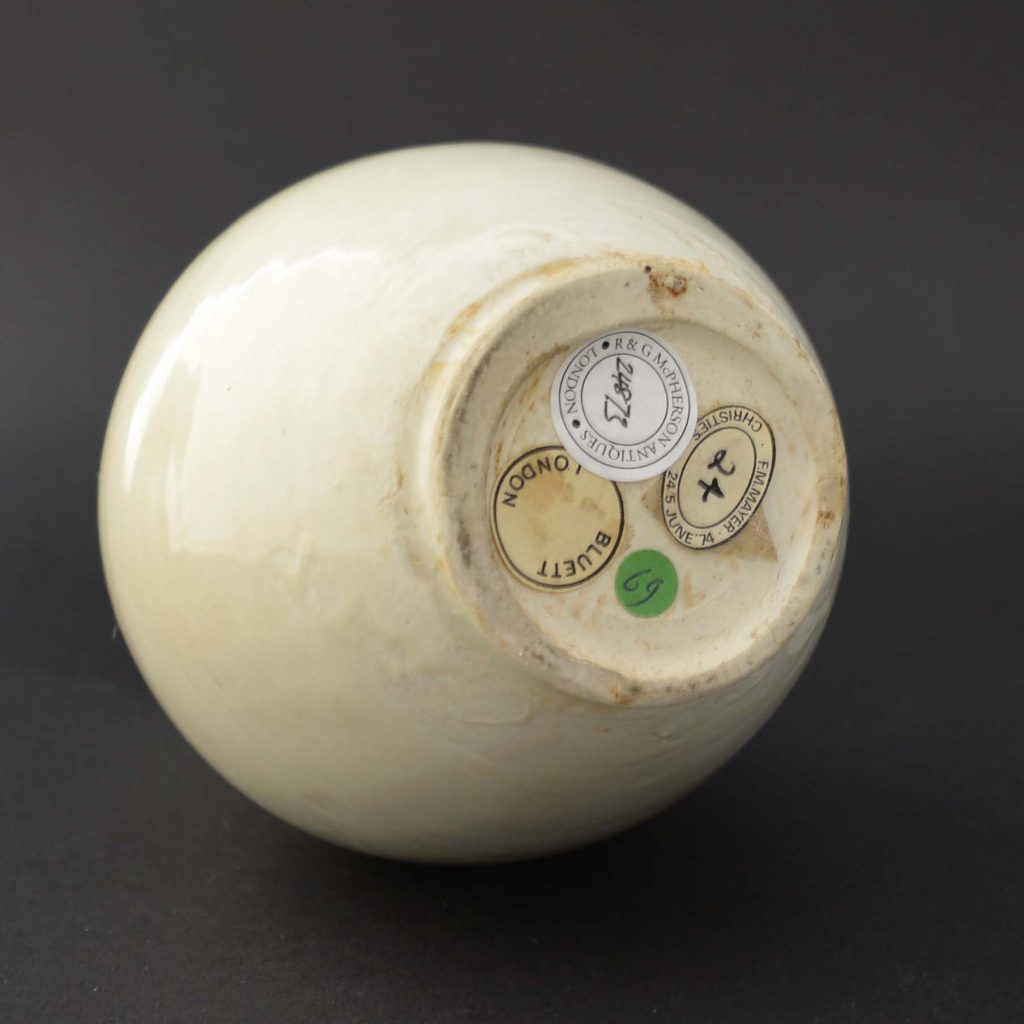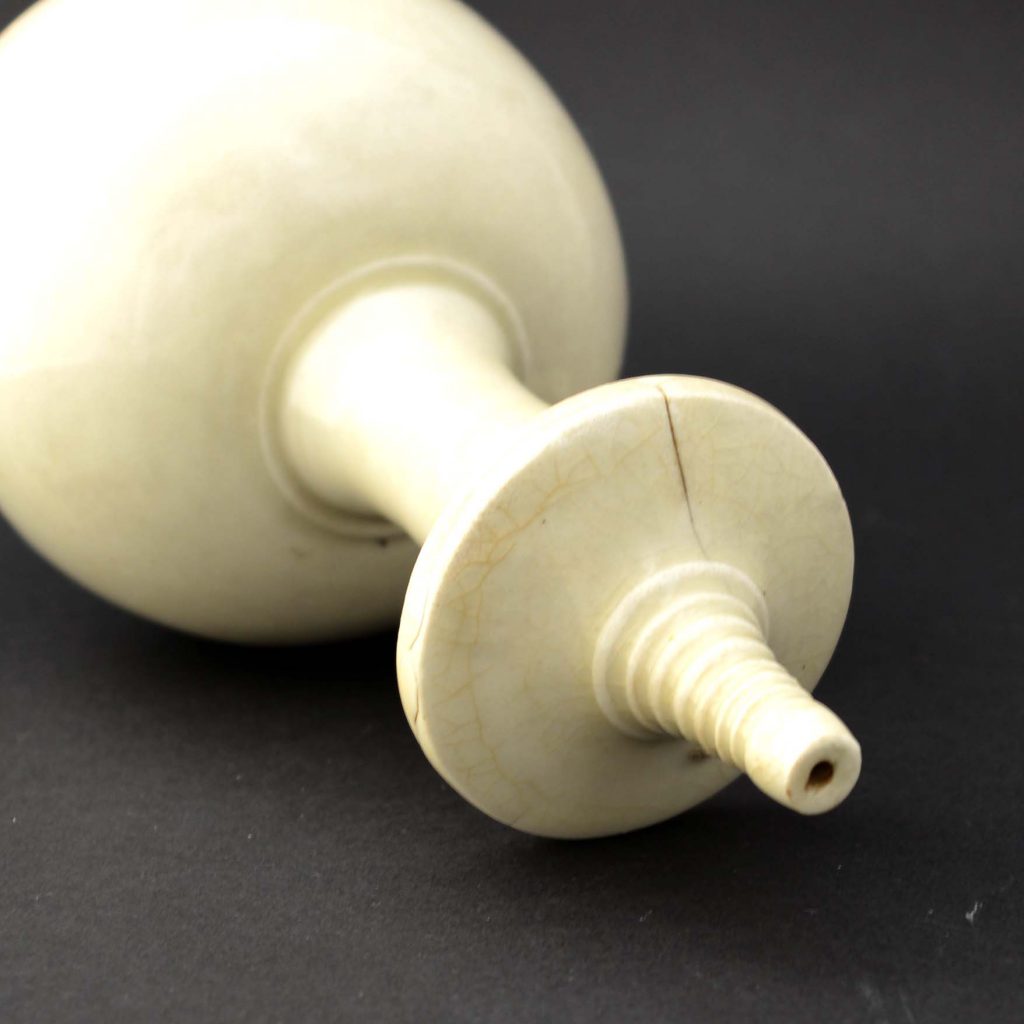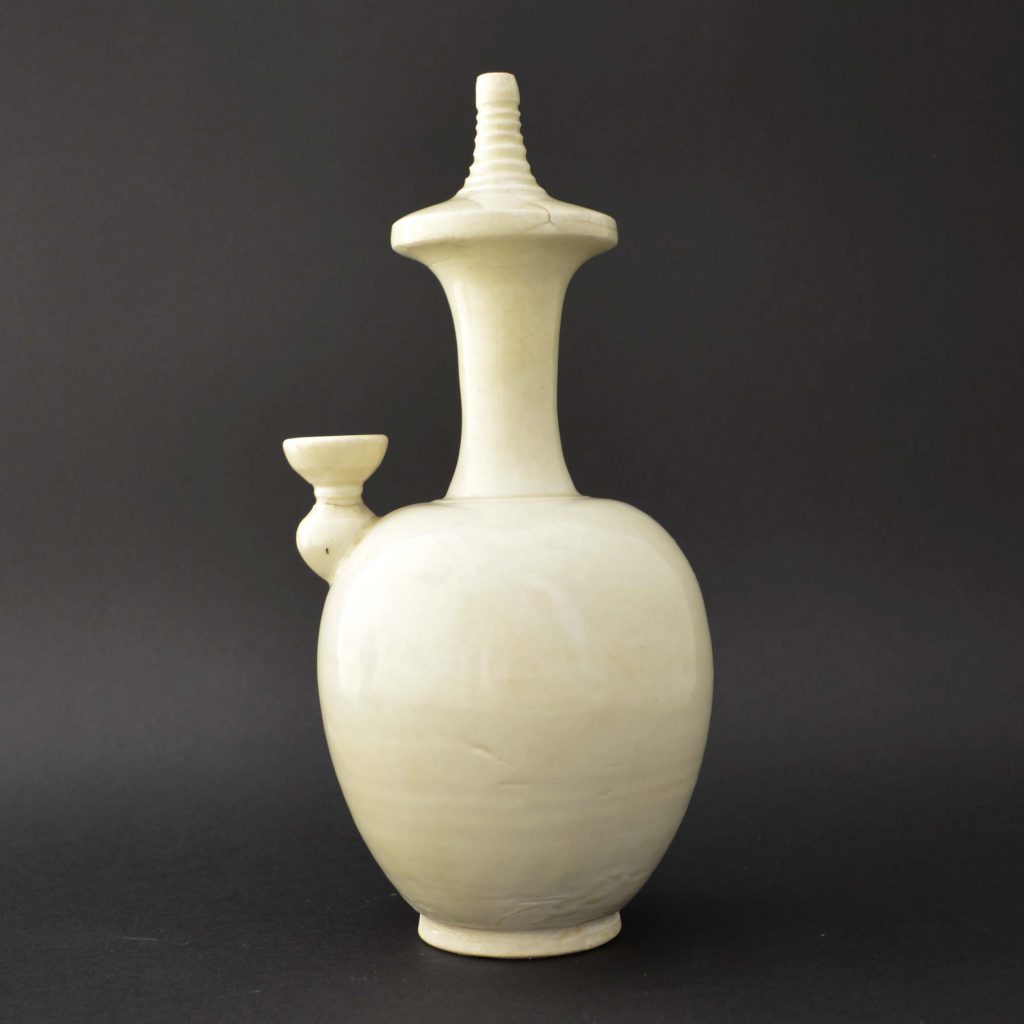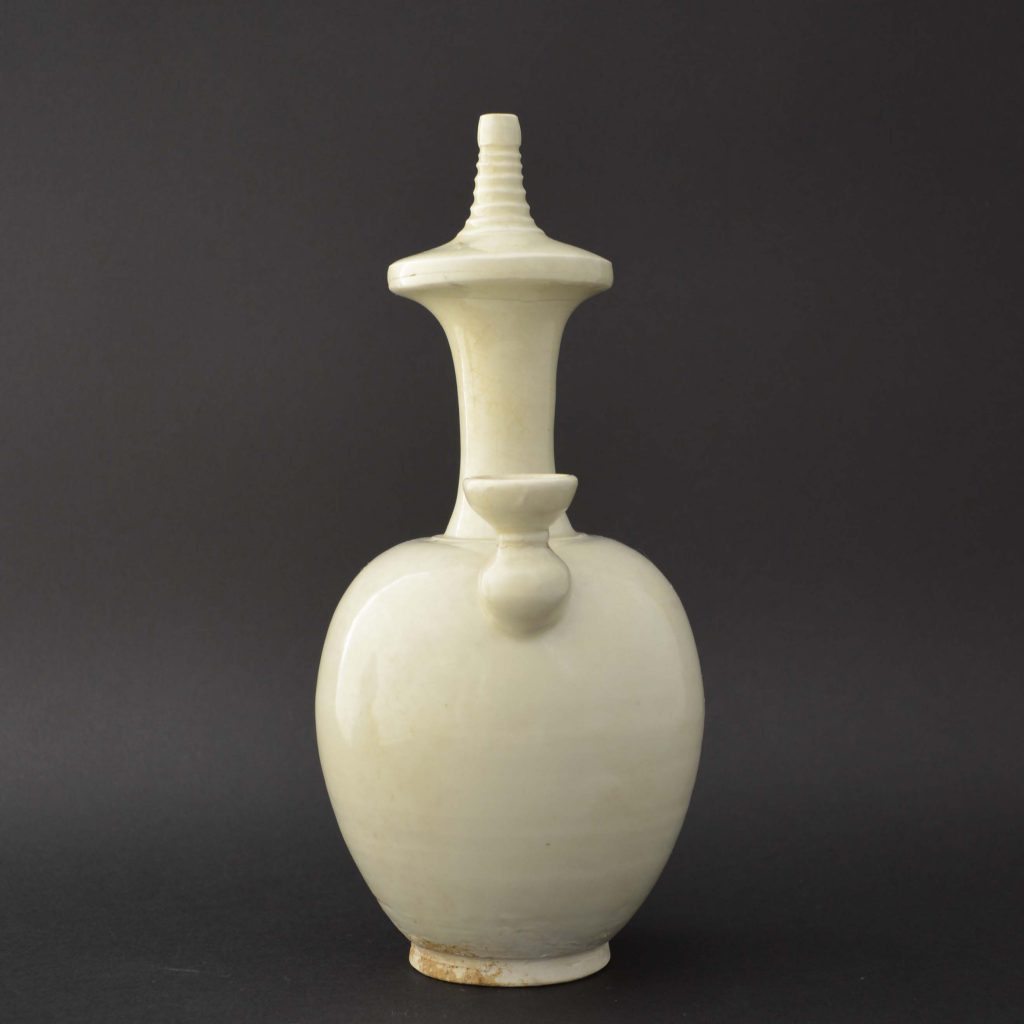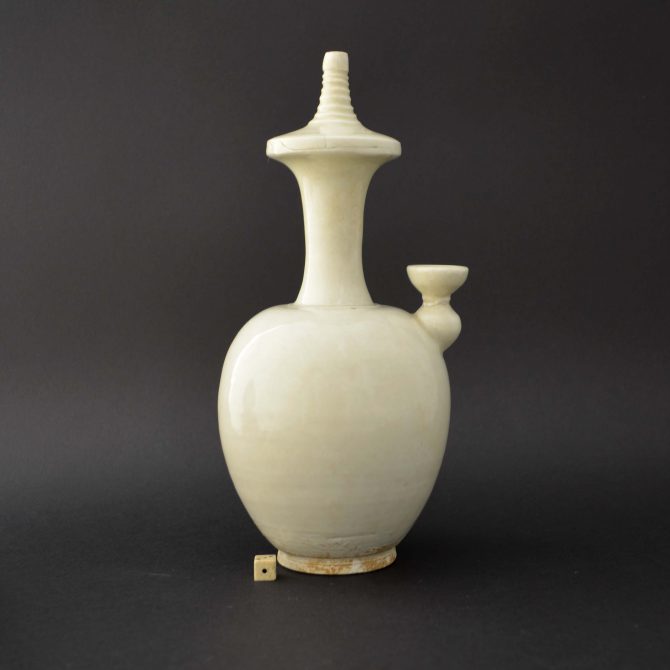
Northern Song Xing Ware Kundika 10th or 11th Century.
A rare Northern Song dynasty (960-1127) Xing ware Kundika c.10th or 11th century.
SOLD
- Condition
- The bowl like spout has been restuck. There are large firing cracks to the top.
- Size
- Height : 22cm (8 2/3 inches)
- Provenance
- F.M. Mayer Collection. Christie's 24/25th June 1974 lot 24 purchased by Bluett's for 2,200 Guineas (£2310). Sotheby's London as "Tang Dynasty" lot 1924, June 1998 B.I. purchased after the sale by Nicolas Thompson. Exhibited : 'The Arts of the Tang', China House, New York, 1960. Exhibited 'Early Chinese Pottery and Sculpture, Metropolitan Museum of Art, New York, cat. no 33. NICOLAS THOMPSON COLLECTION : Nicholas de la Mare Thompson (1928-2010), the grandson of the author Walter de la Mare spent his career in publishing. He started at Nesbit where he was editor of the Janet and John series of children’s books but not all of his career was so safe. He wrestled with W.H. Smith over the content of Madonna’s raunchy Sex book on behalf of Paul Hamlyn’s Octopus Group and defeated Margaret Thatcher over Spycatcher. He could not bare dogma or hypocrisy. It was hardly surprising that as a committee member of the O.C.S. he had his own ideas. He read and could recite great swaths of the articles of the Society, he used this not to attack but to stimulate debate. He approached the Society in the same way as he approached his understanding of Chinese ceramics, by stripping it down and starting again using clear empirical thinking. He was very concerned the Society was open to all and was run for the benefit of all members. Nicholas came from a family of collectors, his love of oriental ceramics was broad but his focus was on early monochromes, especially those from the Song dynasty. He bought what he loved, what he thought had merit, not what was said to be good, and certainly not anything because it was fashionable. He didn’t have a stamp collectors approach, filling in the gaps of pre-existing ordered collection, rather he would react to an object, feeling it was right for his collection. Sometimes he wasn’t sure if it was right for his collection or not. He would then “borrow” pieces and live with them, other times he would ask his wife Caroline, who’s eye he trusted, if he should keep the piece or not. He was amused because I was often able to know if he would keep a piece before he did. We discussed “pots” endlessly, he loved to talk about ceramics with a wide variety of people, and enjoyed the company of others on O.C.S. trips as well as in discussion groups or anywhere else. Later on he combined his love of Chinese ceramics with his love of books by extending his library to include rare early books, he used these to trace the development of collecting and scholarship in the 19th and early 20th century. He was fascinated by earlier scholarship, what was not understood but also what they understood and we have lost. He was always reading and wanted to know more right up to the end, he didn’t see impending death as a barrier to knowledge or indeed collecting. The week before he died he questioned, if only for a second, whether it was too late to buy another pot for the collection. He concluded it was not, he was a true collector. Nicolas died on the 25th of April 2010 at the age of 82 after living with cancer for two years. He leaves behind his energetically supportive wife Caroline and his three children. He was a kind, gentle and incredibly civilised man with a very sharp mind and dry sense of humour, he was passionate about the Society, its aims and its members. He was an incredibly supportive and thoughtful friend and is very much missed .
- Stock number
- 24873
Information
Kundika :
The Kundika shape originated in India, birth place of Buddhism, they were generally made of metal and were used in Buddhist rituals as water sprinklers.
Chinese White Wares :
Since the Tang dynasty (618-906) writers have paid homage to the beauty of white wares leaving tangible evidence of their value. However, the class and refinement displayed in wares of complete whiteness had been sought after hundreds of years before the Tang dynasty and would be cultivated for hundreds of years after its demise. This infatuation generated a variety of white wares which vary in degree of whiteness, refinement of materials, and decoration as a large number of kilns produced white wares even if it was not their specialty. Importantly white wares are not confined to one way of production or from one kiln or geographic area. Until the Southern Song dynasty white wares were considered a product of northern China, however, white wares were still manufactured in the south. Thus, within this commentary, white wares are loosely defined as a body (porcelain or stoneware), slip, glaze, or any combination therein, that creates a white or white-toned ware. Additionally, only a few of the most influential white wares produced during the Song dynasty (960-1279) are discussed as scholars are still debating over the many types of white wares. Future excavation and research hold many exciting discoveries for this discipline.
